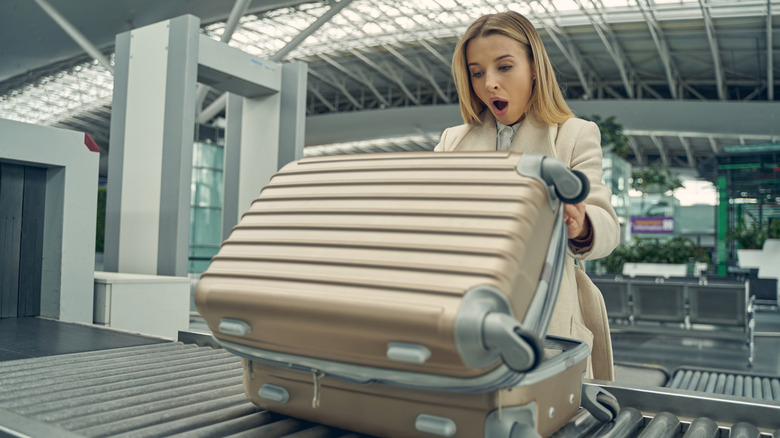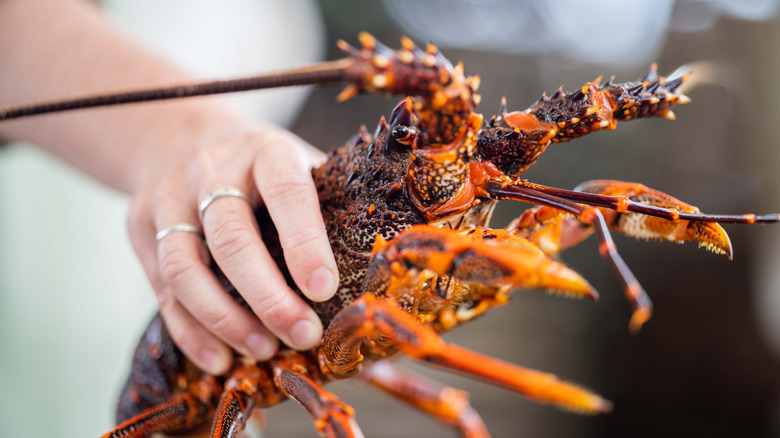TSA Lets You Bring This Living, Breathing Item Through Security (If You Pack Right)
You may wonder: Why would TSA allow passengers to carry live lobsters onto an airplane? What would compel a traveler to pack a living, breathing crustacean into a special container and casually transport it across entire time zones? Considering all the everyday items you can't get through a security checkpoint — like snow globes and the Galaxy Note 7 — you'd think a bottom-dwelling marine animal that has roamed the oceans for 480 million years would get confiscated immediately, right?
Well, you can take a lobster on a plane, and as far as we can tell, there is no definitive reason for this luxury. Maybe you're really picky about the lobster you eventually boil. Maybe you keep one as a pet and need to take it with you, due to the surprisingly high demands of lobster care. Maybe you just want a conversation starter with the passenger next to you. Whatever your motivation, jet-setting with a double-clawed malacostracan is your right as a flyer in U.S. airspace. Actually, a pun-drenched TSA page explains that you can take a wide range of live seafood on a plane, as long as you package it correctly. Crabs, crayfish, bivalves of every kind — they're all allowed in the cabin, living their best aquatic lives at 40,000 feet above, well, sea level. TSA doesn't discriminate on the grounds of edibility, either; in addition to "seafood," you can even bring a beloved pet fish if you choose.
Consider the (airborne) lobster
Ready to fly with your lobster? You now have two important tasks: First, you should call your airline and double-check that all of this is copacetic. The TSA generally allows lobsters, although if the agent decides that your spiny pal is a risk to security in any way, they do have the power to deny you entry with it. The airline may also have its own policies and the last thing you want is to debate how to dispose of a living creature while standing in a busy airport terminal. Assuming you've secured a green light, you must seal your lobster inside a "clear, plastic, spill-proof container," in accordance with official TSA guidelines. Agents at the security checkpoint will inspect your lobster and make sure it's properly contained.
A transparent container means that people will probably notice your lobster, pawing at the plastic floor with its segmented legs and trying to make sense of the walls with its long antennae. You should consult the flight attendant about whether you store this container under the seat in front of you or the overhead compartment. If you worry this will attract too much attention, you may also opt to put the lobster in your checked luggage. Even the sturdiest plastic container may cause concerns while stored in the cargo hold, so here are some tips for safely packing breakable items in checked luggage.
Please be aware that all this pertains to domestic U.S. travel and not international flights. If you absolutely must bring a lobster with you to another country, you may have to do some rigorous research and ultimately declare the lobster at customs before you cross borders. Wherever you're going with your lobster, we can only hope you both arrive without incident — and that you find a decent supply of melted butter.

